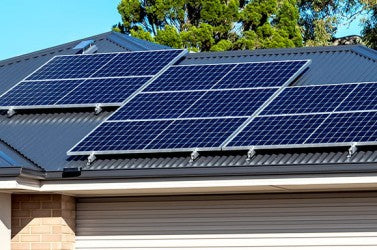
As solar energy gains popularity as a sustainable and eco-friendly alternative, more and more customers are investing in solar inverters to harness the power of the sun. Solar inverters play a crucial role in converting direct current (DC) generated by solar panels into alternating current (AC) used to power homes and businesses. However, like any electronic device, solar inverters are not immune to issues, with one common problem being overload. In this blog post, we'll explore how to reset inverter overload and provide insights into the causes behind this issue.
Is There a Reset Button on an Inverter?
First and foremost, let's address the pressing question many solar inverter owners may have: Is there a reset button on an inverter? In most cases, modern solar inverters are equipped with protection mechanisms that automatically shut down the inverter when an overload occurs. This is a safety feature designed to prevent further damage to the inverter and other connected equipment.
However, the good news is that many inverters do have a reset function. This reset function typically involves powering off the inverter for a short period and then turning it back on to clear any temporary overload conditions. If you're experiencing an inverter overload, it's essential to follow the manufacturer's guidelines to safely reset the inverter and avoid causing further damage.
What Happens if an Inverter is Overloaded?
Before diving into the steps to reset inverter overload, it's important to understand what happens when an inverter faces an overload situation. An overload occurs when the power demand on the inverter exceeds its maximum rated capacity. This can happen due to various reasons, which we'll explore shortly. When an inverter is overloaded, it may trigger the protection mechanisms, leading to an automatic shutdown. This safeguards the inverter from potential damage and also protects connected devices.
If you notice your solar inverter has shut down unexpectedly, it might be due to an overload condition. The inverter may display an error code or indicator light to signal the overload issue. In such cases, it's crucial not to ignore the problem and take appropriate action to reset the inverter safely.
How Does an Inverter Overload Occur after Lighting?
Lightning strikes are a common concern for solar energy enthusiasts, especially in areas prone to thunderstorms. While solar panels themselves are designed to withstand such events, the inverter might be at risk. Lightning-induced surges can cause electrical disturbances that overload the inverter, leading to a shutdown.
In such cases, the inverter's protective features come into play, preventing any further damage. However, after the storm passes, resetting the inverter can get your solar system back up and running efficiently.
6 Common Causes of Inverter Overload and Their Fixes
Now that we understand the importance of resetting an overloaded inverter, let's delve into the common causes behind this issue and the corresponding fixes.
1. Low Battery Voltage
Low battery voltage is a frequent cause of inverter overload, especially in off-grid solar systems. If the battery voltage drops below the minimum threshold required by the inverter, it may trigger an overload shutdown. To address this, ensure your solar panels are charging the batteries properly, and consider investing in higher capacity batteries if required.
2. Short Circuit
A short circuit in the solar panel or inverter wiring can cause a sudden surge in current, leading to an overload. Inspect the wiring for any signs of damage or loose connections. Fix any faults and use appropriate fuses or circuit breakers to prevent short circuits.
3. Faulty Wiring
Incorrect wiring, such as using undersized cables or improper connections, can result in voltage drops and increased resistance, leading to an inverter overload. Ensure that your solar system is installed by a certified professional, and use quality wiring and connectors.
4. High Inrush Current
Some appliances, particularly those with motors or compressors, can draw a high inrush current when they start. This momentary surge in power demand might overload the inverter. Consider using soft-start devices or inverters with higher surge capacity to accommodate such loads.
5. Overload Due to User Error
Sometimes, an overload occurs simply due to user error. Running too many high-power appliances simultaneously or connecting loads beyond the inverter's capacity can lead to an overload. Be mindful of your energy consumption and avoid overloading the inverter with excessive demands.
6. Overloading from a Faulty Inverter
In rare cases, the inverter itself might be faulty, causing an overload even under normal operating conditions. If you've ruled out all other possible causes, it might be time to contact the manufacturer or a professional technician to inspect and repair the inverter.
Conclusion
Solar inverters are an essential component of any solar energy system, and occasional overloads can be expected due to various reasons. By understanding the common causes of inverter overload and following the manufacturer's guidelines for resetting, solar energy enthusiasts can ensure smooth and efficient operation of their solar systems. Remember to prioritize safety and consider seeking professional help whenever necessary. With a well-maintained solar inverter, you can enjoy the abundant benefits of clean and renewable energy for years to come. Happy solar powering!


0 Kommentare